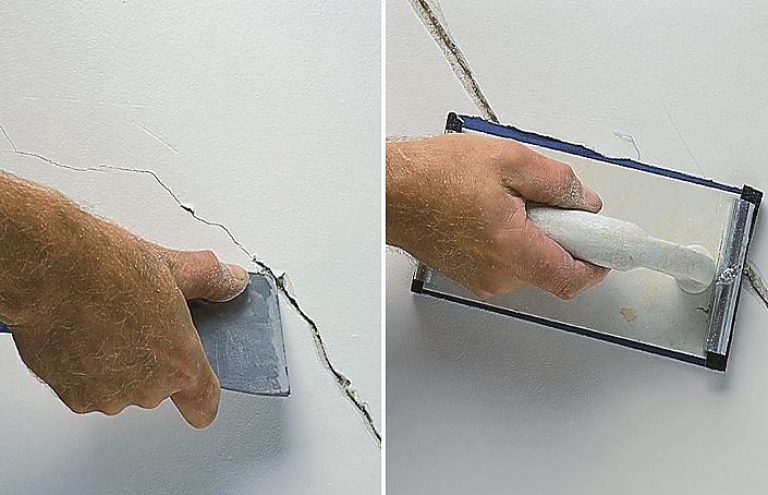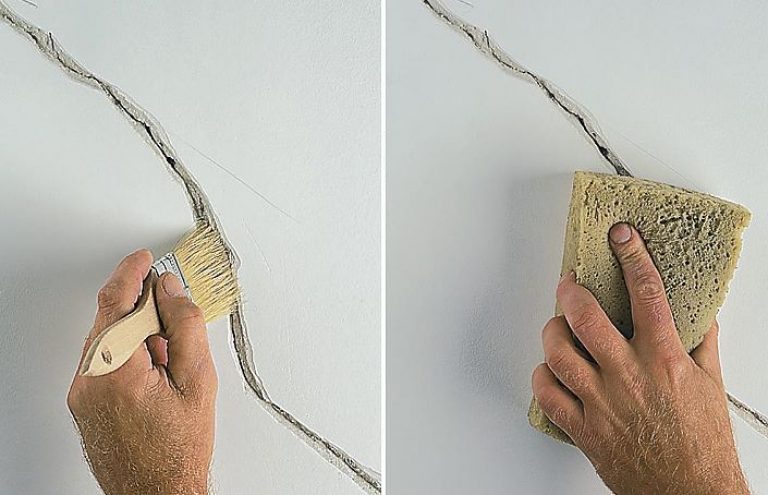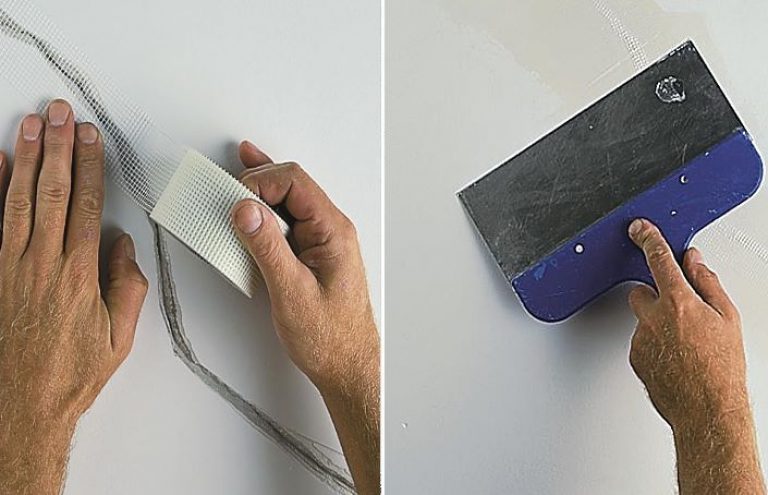How to fix cracks in the wall of an apartment house?
The question is how to fix cracks in a wall apartments or how to fix cracks in wall, oddly enough, most often worries the happy owners of new housing.
Absolutely all developers, for obvious reasons, want to sell the built houses and apartments to their customers as soon as possible. At the same time, almost always, after checking into a new home, happy buyers are faced with certain imperfections, shortcomings or defects.
Quite often, such manifested defects are small or large cracks on the main structures. In many cases, they do not pose a threat to the integrity of the building and the safety of residents, but they must be repaired and removed.
Theoretically, when buying a new house or apartment, you should be sure that all the main structural elements of the housing will be in good condition, without any damage and defects and cracks. However, practice often shows something completely different.
Increasingly, when buying an apartment, we encounter various minor damages, such as cracks and scratches on walls, ceilings and floors. More often this is due to too fast plastering work before the required moisture level has been reached, and the foundation itself has fully settled and stabilized.
Whatever the walls of your house are: brick, plaster, concrete or panel, the formation of cracks often has the same causes.
Long-term construction of housing, especially such a complex one as a multi-storey building or an apartment building, is quite natural. In some cases, a good builder will recommend that the building box be left wet for one season.
That is, the foundation, walls, ceilings and roof are made in one year, and finishing work is carried out only in the next year. This is a very good practice because there is time between works for the building to shrink sufficiently. This greatly reduces the risk of mini deformations and cracks.
Cracks in an apartment are not uncommon when buying or building a new home.
In a word the first and most common cause is the natural shrinkage of a newly constructed building. Unfortunately, most developers want to sell finished apartments and houses as quickly as possible. Even the customers themselves rarely agree to extend the construction time because of the need to wait out the winter.
Another reason for the appearance of cracks can be Poorly carried out geodetic works. The obligatory geological study of the soil before the start of any construction is the key to the expected result for each homeowner. As a consequence of this, or as a separate cause, is non-compliance with the specific soil of the structure or foundation materials.
Geological research of the soil involves drilling at least 2-3 wells and studying the soil, of course, even before the design of the house. This procedure will protect you from many unpleasant surprises in the future, such as unstable ground or high groundwater levels.
Cracks often appear as linear surface damage along the entire height of the wall or as transverse cracks. Before starting a repair, carefully check the condition of the base coat around the repair site.
Important: when starting work, you must be sure that the expansion of the crack, its increase has stopped. It is not necessary to eliminate defects whose development has not yet stopped if the wall crack is creeping. Don't do double work. The cause must be identified and eliminated.
Also, before you start fixing the crack with your own hands, you should look into the contract of sale or contract work and decide on a guarantee. It is necessary to accurately fix the condition of all walls and ceilings at the time of receipt of the apartment or acceptance of the house.
2. How to fix a crack in the plaster on the wall
If you need to fix a crack in a plastered surface, you only need to follow a few simple steps. While this may be cement-sand and gypsum and lime plaster. To do this, you will need the following tools and materials:
- Large and small spatula
- tassel
- Sponge
- Sandpaper
- Primer
- Putty (repair composition)
- Reinforcing mesh (in some cases)
• Crack expansion and cleaning
The right decision is to remove the paint, if any, and the plaster in the immediate vicinity of the repair site, in order to more thoroughly introduce the new filler into the crack, and more closely contact the base material. Expanding can be done with a wire brush and a small spatula.

The expansion of the crack with a metal spatula, and the subsequent cleaning of its edges is one of the necessary repair steps.
The next step is careful crack cleaning from dirt and dust. This is very important, because even a minimal amount of foreign elements significantly reduces the bond between the leveling compound and the base material.
Then it is necessary to apply a primer to the crack, which will increase the overall adhesion of the surface. The composition of the primer is selected based on the material of the putty and the main structural element.

Removing dust from the crack with a brush or vacuum cleaner and applying a primer to obtain optimal adhesion.
• Filling, leveling and grinding of cracks
To initially fill the crack with repair mortar, use a small trowel, and only then level the surface with a wide trowel. For such wall repairs, a flexible stainless steel trowel or a plastic trowel with a rubber end is best suited.How to fix a crack? How to cover cracks in the wall? To repair small cracks with a width of a few millimeters, it is recommended to use ready-made polymer putty. It is sold in plastic containers and after opening it is immediately ready for use, without the need for mixing.
In addition to polymer putty, you can use gypsum putty, cement-based mixture or acrylic paint sealant. All these materials are commensurable in terms of the quality of the result obtained when repairing minor damage, but differ in price and the need for preliminary preparation.
The ideal option would be to choose a filler that is the basis of the surface of the wall being repaired, although the use of non-identical compositions, contrary to some opinions, is not critical. This means that small cracks in the wall in cement-based plaster can be easily repaired with a gypsum-based or polymer putty or PVA-based putty.
Important: do not forget to clean the spatulas from possible contamination before use. Use only clean tools. Any dirt and dry material residue on the trowel can interfere with the leveling and smoothness of the surface.
Do not apply putty in one layer if the crack is deeper than 2-3 mm. If you need to repair deeper damage, do the work in two or even three stages, since almost any material has a tendency to shrink.

When repairing a surface with a crack wider than 2 mm, it is possible to use a special mounting tape made of fiberglass
For complete confidence in the quality of the result of the work, it is possible using a special mounting tape which is glued over a crack filled with the selected composition, after its final drying. After that, the tape is again covered from above with the same solution, which is leveled with a spatula.
Such a tape takes on some of the stresses that arise during the collection and release of moisture by individual materials, such as gypsum. In most cases of crack formation on traditional plastered surfaces, it is sufficient to simply fill them, without the use of additional elements.
After complete drying of the repaired area, it is necessary to do work on grinding the surface sandpaper with a grain size of about 100-150. The best would be to use a manual grinder, however, just manual grouting is also possible. On this question, how to repair cracks in the wall of the apartment can be considered resolved.

Acrylic sealant is indispensable for many repairs, due to its excellent adhesion to most materials: brick, concrete, stone, plastic, gypsum. It is applied manually with a pneumatic gun.
If you decide to use paintable acrylic sealant, then the technology differs only in the way the repair mortar is introduced into the crack. Painting acrylic is a plastic-elastic, modified sealant based on an aqueous acrylic dispersion.
It can serve as a leveling material for any surface, and is ideal as a base for subsequent or ceilings and joints. And this fastest way to repair cracks on painted walls.
Acrylic sealant is ideal for masking flaws and defects in concrete, masonry and plaster, for filling joints in skirting boards, window sills, decorative panels and is very convenient for sealing cracks in wall corners.




